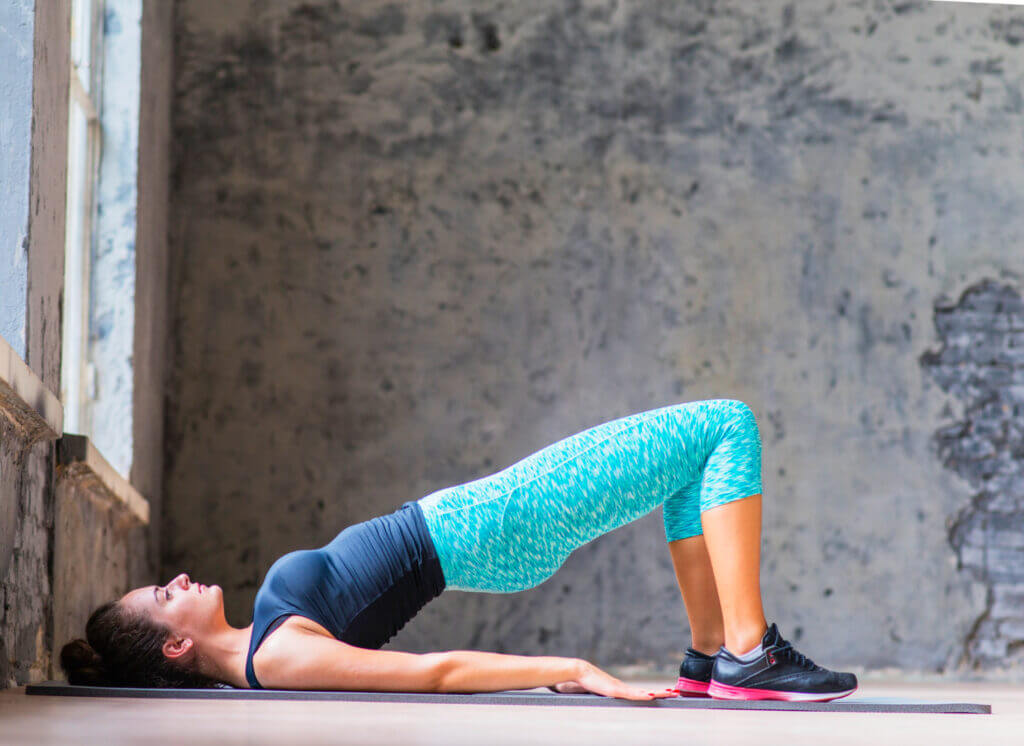Stride length refers to the distance covered by each step during running, and by increasing this distance, you can take fewer steps to cover more ground. This can lead to improved running efficiency, faster race times, and an overall more enjoyable running experience.
In this article, we will share five highly effective tips that can help you increase your running stride length and take your running to the next level. These tips include improving your flexibility, focusing on proper running form, increasing your cadence, incorporating plyometrics into your training, and strengthening your lower body muscles.
By following these tips consistently and gradually incorporating them into your training routine, you can improve your running performance and achieve your fitness goals while enjoying the many benefits of running.
Table of Contents
Tip 1: Improve Your Flexibility

Flexibility is an important aspect of running that is often overlooked. However, it plays a crucial role in improving your stride length and overall running performance. When your muscles are tight, they restrict your range of motion, making it difficult to achieve a longer stride.
Therefore, incorporating flexibility exercises into your training routine can help you achieve better results. In this section, we will discuss some stretches and exercises that can help you improve your flexibility for optimal running performance.
1. Lunges
Lunges are an excellent exercise to improve lower body flexibility. They target your hip flexors, quads, and hamstrings, all of which are important for running. To perform lunges, step forward with one leg and lower your body until your front knee is at a 90-degree angle. Make sure to keep your back straight and your core engaged. Hold the stretch for a few seconds and then switch sides. Repeat the process for several reps.
2. squats
Squats are another great exercise that can help improve lower body flexibility. They work your quads, glutes, and hamstrings, all of which are important for running. To perform a squat, stand with your feet shoulder-width apart and your toes pointed slightly outward.
Lower your body by bending your knees and pushing your hips back. Make sure to keep your back straight and your core engaged. Hold the stretch for a few seconds and then rise back up. Repeat the process for several reps.
3. Hip flexor stretches
Hip flexor stretches are also important for improving flexibility. Your hip flexors are the muscles responsible for lifting your leg during running. To stretch them, kneel on one knee and place the other foot in front of you.
Push your hips forward until you feel a stretch in the front of your hip. Hold the stretch for a few seconds and then switch sides. Repeat the process for several reps.
Incorporating these stretches and exercises into your training routine can help you improve your flexibility and achieve a longer stride.
However, it’s important to remember to stretch after your run as well to prevent injury and aid recovery. Gradually increasing the intensity of your flexibility exercises over time will also help you see progress. Remember, consistency is key!
Tip 2: Focus on Proper Running Form

Proper running form is not only essential for optimal performance but also for reducing the risk of injury. When you have a correct form, your body becomes more efficient in distributing energy, thereby making each stride count. So, let’s dive into the key components of proper running form that you should focus on:
- Maintain a Tall Posture
As you run, keep your gaze forward and avoid slouching. Your head should be up, and your shoulders relaxed to maintain a tall posture. When you keep a good posture, you allow your lungs to expand fully, which helps you breathe better, and ultimately, run better.
- Land Midfoot
When you take each stride, try landing on the middle of your foot instead of your heel. This way, you reduce the impact on your feet and knees, and you’re more likely to use your foot’s natural shock-absorbing properties.
When you land on your heels, your body weight shifts backward, which shortens your stride length and reduces your overall performance.
- Swing Your Arms Efficiently
Your arms’ movement should be back and forth naturally and relaxed, forming a 90-degree angle. Try not to cross your arms across your body or clench them. An efficient arm swing provides momentum, and with a proper form, your energy will be directed toward your forward movement.
- Engage Your Core
Your core is like the foundation of a house. It keeps your body stable and aligned, so you can maintain proper form. While running, engage your abdominal muscles and maintain a firm core. This helps your body remain upright, preventing your hips from sagging and reducing the strain on your lower back.
- Breathe Deeply and Rhythmically
Breathing efficiently is crucial in running. Inhale through your nose deeply, then exhale through your mouth in a steady rhythm. This helps you regulate your breathing, increases oxygen flow to your muscles, and can reduce fatigue.
To improve your running form, try incorporating mirror drills into your routine. By running in front of a mirror, you can observe your movements and adjust your form as needed. You could also try recording yourself running and analyzing your form afterward.
For more personalized attention, consider working with a running coach or joining a running group. By focusing on these key components of proper running form, you can improve your stride length, run more efficiently, and reduce the risk of injury.
Tip 3: Increase Your Cadence
When it comes to running, cadence refers to the number of steps you take per minute. A higher cadence means taking more steps per minute, while a lower cadence means taking fewer steps. Increasing your cadence can have a significant impact on your stride length and overall running performance.
Why is Cadence Important?
When you increase your cadence, you naturally take shorter strides, which can reduce the impact on your joints and help prevent injuries. Shorter strides also mean that your feet spend less time on the ground, resulting in a faster turnover rate and improved running speed.
How to Increase Your Cadence?
Here are some tips to help you increase your cadence:
- Use Music with a Fast Beat
Listening to music with a fast tempo can help you match your foot strikes to the beat of the music. This can help increase your cadence and improve your running efficiency.
A metronome is a device that produces a steady pulse at a set tempo. You can use a metronome app on your phone or a small metronome device to help you maintain a consistent cadence.
- Run with a Partner
Running with a partner who has a higher cadence can help you naturally increase your own cadence. You can also use verbal cues to help each other maintain a consistent rhythm.
- Focus on Quick Foot Strikes
Try to land on the ground with a quick, light foot strike. This will help you spend less time on the ground and increase your turnover rate.
- Gradually Increase Your Cadence
Start by gradually increasing your cadence by 5-10% per week. This will help your body adjust to the higher cadence and prevent injury.
Final Thoughts:
Increasing your cadence is a simple but effective way to improve your running performance. By using music, a metronome, running with a partner, and focusing on quick foot strikes, you can gradually increase your cadence and experience the benefits of a more efficient running stride. Remember to start slowly and listen to your body, and with consistent practice, you’ll soon see the results of your efforts.
Tip 4: Incorporate Plyometrics into Your Training
If you’re looking to increase your running stride length, incorporating plyometrics into your training routine can be a game-changer. Plyometric exercises involve explosive, high-intensity movements that can help to improve your power, speed, and agility, which can all contribute to a longer stride length.
What exactly are plyometrics?
Essentially, these exercises involve jumping, hopping, and bounding movements that require you to generate a lot of force and power in a short amount of time.
By incorporating plyometrics into your training routine, you can improve your neuromuscular efficiency, which means that your muscles and nervous system will be better able to work together to produce more powerful movements.
So, how can you incorporate plyometrics into your running training? Here are some exercises to try:
- Jump Squats: Stand with your feet shoulder-width apart and squat down until your thighs are parallel to the ground. Then, explosively jump up into the air, reaching your arms overhead. Land softly and immediately squat down again, repeating the movement for several reps.
- Bounding: Start by taking a few running steps, then jump forward as far as you can with one foot, landing on the same foot and immediately jumping forward again. Repeat with the other foot.
- Box Jumps: Stand in front of a sturdy box or platform that is knee-height or higher. Jump up onto the box, landing with both feet at the same time, and then step down and repeat the movement for several reps.
When incorporating plyometrics into your training, it’s important to start slowly and gradually increasing the intensity and volume of your workouts. These exercises are high-impact and can be stressful on your joints, so it’s important to pay attention to your body and avoid overtraining.
In addition to improving your running stride length, plyometric exercises can also help to reduce your risk of injury, as they strengthen your muscles, tendons, and ligaments. So, if you’re looking to take your running performance to the next level, give plyometrics a try and see how they can improve your stride length and overall running performance.
Tip 5: Strengthen Your Lower Body Muscles
Another effective way to increase your running stride length is to strengthen your lower body muscles. Strong muscles in your legs and hips will allow you to generate more power with each stride, enabling you to cover more ground with less effort. Here are some exercises you can do to strengthen your lower body muscles:
1. Deadlifts

Deadlifts are a compound exercise that works for multiple muscle groups in your lower body, including your glutes, hamstrings, and lower back. Stand with your feet hip-width apart, with a barbell on the ground in front of you.
Bend down and grab the barbell with an overhand grip, keeping your back straight and your chest up.
Lift the barbell up off the ground, using your legs and hips to generate the force. Lower the barbell back down to the ground and repeat for several sets of 8-12 reps.
2. Step-ups
Step-ups are a great exercise for building lower body strength and improving your balance. Stand in front of a sturdy box or step with your feet hip-width apart. Step up onto the box with one foot, then step up with the other foot to stand on the box.
Step back down to the starting position, leading with the opposite foot. Repeat for several sets of 10-15 reps on each leg.
3. Glute Bridges
Glute bridges target your glutes and hamstrings, two muscle groups that are essential for generating power with each stride. Lie on your back with your knees bent and your feet flat on the ground.
Lift your hips up toward the ceiling, squeezing your glutes at the top of the movement. Lower your hips back down to the ground and repeat for several sets of 10-15 reps.
4. Single-leg Deadlifts
Single-leg deadlifts are a variation of the traditional deadlift that targets your glutes, hamstrings, and lower back while also improving your balance. Stand on one leg with a weight in the opposite hand.
Keeping your back straight, hinge forward at the hips and lower the weight toward the ground. Use your glutes and hamstrings to lift back up to the starting position. Repeat for several sets of 8-12 reps on each leg.
By incorporating these exercises into your training routine, you can build the lower body strength necessary to increase your running stride length. Just be sure to start with light weights and gradually increase the intensity as you get stronger. Remember, consistency is key, so make sure to stick with your training routine to see the best results.
Conclusion
In conclusion, increasing your running stride length can have a significant impact on your running performance, allowing you to cover more ground with each stride and run faster with less effort.
By implementing the five tips discussed in this blog – improving your flexibility, focusing on proper running form, increasing your cadence, incorporating plyometrics into your training, and strengthening your lower body muscles – you can improve your stride length and take your running to the next level.
Remember, consistency and gradual progress are key to achieving optimal results. So, start implementing these tips into your training routine and watch as your running stride length and overall performance improve. Happy running!


